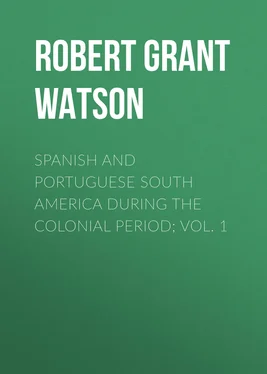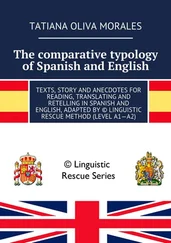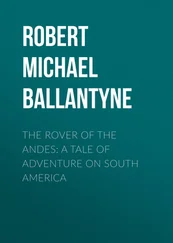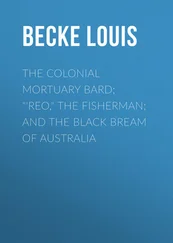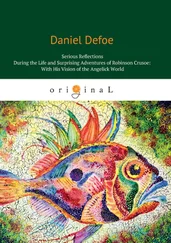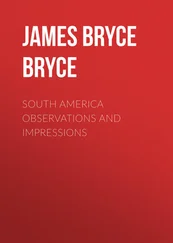Robert Grant Watson - Spanish and Portuguese South America during the Colonial Period; Vol. 1
Здесь есть возможность читать онлайн «Robert Grant Watson - Spanish and Portuguese South America during the Colonial Period; Vol. 1» — ознакомительный отрывок электронной книги совершенно бесплатно, а после прочтения отрывка купить полную версию. В некоторых случаях можно слушать аудио, скачать через торрент в формате fb2 и присутствует краткое содержание. Жанр: foreign_prose, История, foreign_edu, foreign_antique, на английском языке. Описание произведения, (предисловие) а так же отзывы посетителей доступны на портале библиотеки ЛибКат.
- Название:Spanish and Portuguese South America during the Colonial Period; Vol. 1
- Автор:
- Жанр:
- Год:неизвестен
- ISBN:нет данных
- Рейтинг книги:5 / 5. Голосов: 1
-
Избранное:Добавить в избранное
- Отзывы:
-
Ваша оценка:
- 100
- 1
- 2
- 3
- 4
- 5
Spanish and Portuguese South America during the Colonial Period; Vol. 1: краткое содержание, описание и аннотация
Предлагаем к чтению аннотацию, описание, краткое содержание или предисловие (зависит от того, что написал сам автор книги «Spanish and Portuguese South America during the Colonial Period; Vol. 1»). Если вы не нашли необходимую информацию о книге — напишите в комментариях, мы постараемся отыскать её.
Spanish and Portuguese South America during the Colonial Period; Vol. 1 — читать онлайн ознакомительный отрывок
Ниже представлен текст книги, разбитый по страницам. Система сохранения места последней прочитанной страницы, позволяет с удобством читать онлайн бесплатно книгу «Spanish and Portuguese South America during the Colonial Period; Vol. 1», без необходимости каждый раз заново искать на чём Вы остановились. Поставьте закладку, и сможете в любой момент перейти на страницу, на которой закончили чтение.
Интервал:
Закладка:
Having performed this important duty, Vasco Nuñez now descended into the regions that lay between the mountains and the Pacific. He was again encountered by a warlike cacique , who forbade him to set foot upon his territory. The result, however, of the first onset of the Spaniards was the same as had been the case with their last enemy. The Indians having taken to flight, Nuñez commanded his men to refrain from useless slaughter. The cacique , having been brought before him, presented five hundred pounds weight of gold as a peace-offering. A scouting party having found the sea at a distance of two days’ journey, and Nuñez having been rejoined by his men whom he had left behind him, he now established the headquarters at the village of this cacique , while he himself proceeded with a small party to explore the coast. After traversing a region clothed down to the water’s edge by thick forests, Nuñez arrived on a bay to which, on account of the date, he gave the name of St Michael’s . When the receding tide had risen, he marched into the water, and waving his banner, formally took possession of these seas and coasts, and of all appertaining to them, in the name of the Castilian sovereigns. He likewise cut crosses on three trees, in honour of the Three Persons of the Trinity.
The Spaniards were now to encounter a new form of danger, of the nature of which, notwithstanding all their previous experience, they had never dreamt. Having been successful in obtaining a considerable quantity of gold whilst at his headquarters of Chiapes , Nuñez determined to explore the borders of a neighbouring gulf; nor was he deterred by the warnings of his host against the danger of venturing to sea in the stormy season then commencing. Vasco Nuñez, who looked upon himself as being an apostle of the faith, had a firm belief in the especial protection of God, and therefore despised the caution given. His Indian host, whose experience of the stormy gulf by no means led him to entertain a like confidence, was nevertheless too polite not to accompany the daring stranger, whose party of sixty men embarked in nine canoes on the 17th of October.
When the Spaniards were fairly launched, and when it would have seemed pusillanimous to retreat, the wisdom of the cacique’s advice began to be perceived. The wind raised a heavy sea, which broke over the rocks and reefs with which the gulf abounded. Even the Indians, accustomed as they were to those seas, showed signs of alarm. They succeeded, however, in lashing the canoes together, two and two, and thus prevented them from upsetting, until, towards evening, they reached a small island. Here landing, they fastened the canoes to the shore, and sought a dry place where the party might repose. But they were soon awakened by the rapid rising of the water, upon which they had not counted; and they at length found themselves almost to their waists in water. The wind, however, lulled, and the sea became calm, and after a time it began to subside. They found their canoes seriously damaged; whilst their clothing and food were washed away. There was nothing for it but to repair the canoes as best they could; after which they set out on their return to the shore. They had to labour all day long, enduring severe hunger and thirst; but at night they had the satisfaction of reaching the land.
Leaving a portion of his men with the canoes, Nuñez set out for the neighbouring Indian village, from which the inhabitants were driven before the firearms and dogs of the invaders. A quantity of provisions, besides pearls and gold, rewarded the brigands; and on the following day the cacique , who had been so violently driven into the woods, was induced to return to his home, the object of his despoiler in inviting him being a desire to ascertain the source whence he procured his pearls. Fear opened the heart of the poor Indian, who, in his awe of the superhuman strangers, as he thought them, gave Vasco Nuñez golden ornaments weighing six hundred and fourteen crowns, and two hundred pearls of great beauty; he further sent a number of his men to fish for pearls for the Spaniards.
The cacique informed Nuñez that the coast which he saw before him continued onwards without end, and that far to the south there was a country abounding in gold; its inhabitants, he said (alluding to the llama ), made use of quadrupeds to carry burdens. Inspired by this intelligence, Nuñez determined to emerge from the gulf and to take possession of the mainland beyond. The cacique having furnished him with a canoe of state, he departed in it on the 29th of October, and was piloted by the Indians as far as to the point of the gulf, when he again marched into the sea and took possession of it. He saw before him a line of coast rising above the horizon, which the Indians said abounded in pearls. To this island and the surrounding group he gave the name of the Pearl Islands. On the 3rd of November he set out to visit other parts of the coast. Entering a great river, which the party ascended with difficulty, Nuñez next morning surprised a village on its banks, and obtained from the cacique , as the price of his liberty, more gold and pearls, and a supply of provisions.
From this point Vasco Nuñez determined to set out on his return to Darien . After having been entertained during three days by the cacique whom he had robbed, he set out well furnished with provisions, which were carried by the subjects of the Indian chief. His route now lay over sterile mountains, and he and his men suffered much from the absence of water; for the burning heat had dried up all the mountain streams. The fevered Spaniards were, however, gently urged by the Indians to proceed, and were at length rewarded by arriving in a deep glen which contained a cool fountain. They were now in the territory of a chief called Poncra, who had the reputation of possessing great riches. At the approach of the Spanish bandits, Poncra and his people fled from their village, in which Nuñez and his men appropriated to themselves property to the value of three thousand crowns of gold. Poncra having been caught, was brought before Nuñez, together with three of his subjects; but neither threats nor torture could compel him to betray the locality of his treasures. Under these circumstances, the unfortunate wretch was accused by his enemies of certain practices of which he may or may not have been guilty. In any case Nuñez had no sort of authority to be his judge. He was enraged, however, at his obstinacy in refusing to reveal his treasures, and Poncra and his three companions were given to be torn, to pieces by the blood-hounds. We shall soon have to ask the reader’s sympathy for the fate of Vasco Nuñez himself; meanwhile, it may be well to bear in mind of what atrocious conduct he could on occasion be guilty towards others.
The Spaniards halted during thirty days at the village of the ill-fated Poncra, during which time they were rejoined by their companions who had been left behind. And here it may be observed that it appears somewhat strange that the energetic Vasco Nuñez, over whose head a grave accusation at this time hung, and who had undertaken his expedition to the Pacific in order to anticipate its evil results, should have apparently wasted so much time at this spot, since it was everything to him that not an hour should be lost in making his magnificent discovery known in Spain.
On departing from the village of Poncra, the Spaniards were accompanied by one of the caciques of the mountain, who not only lodged and fed them, but further presented them with the value of two thousand crowns. The Spaniards, on leaving the district, bent their course for some time along the river Comagre . When they abandoned it, owing to the precipitous nature of its banks, they had to trust entirely to their Indian guides. Had these deserted them, they would have been lost in the thick forests and unseen morasses. In their journey they were the victims of their own avarice; for they had loaded most of the Indians with gold alone, and now found themselves destitute of provisions. Many of their Indian bearers, oppressed by their burdens, sank down to perish by the way.
Читать дальшеИнтервал:
Закладка:
Похожие книги на «Spanish and Portuguese South America during the Colonial Period; Vol. 1»
Представляем Вашему вниманию похожие книги на «Spanish and Portuguese South America during the Colonial Period; Vol. 1» списком для выбора. Мы отобрали схожую по названию и смыслу литературу в надежде предоставить читателям больше вариантов отыскать новые, интересные, ещё непрочитанные произведения.
Обсуждение, отзывы о книге «Spanish and Portuguese South America during the Colonial Period; Vol. 1» и просто собственные мнения читателей. Оставьте ваши комментарии, напишите, что Вы думаете о произведении, его смысле или главных героях. Укажите что конкретно понравилось, а что нет, и почему Вы так считаете.
